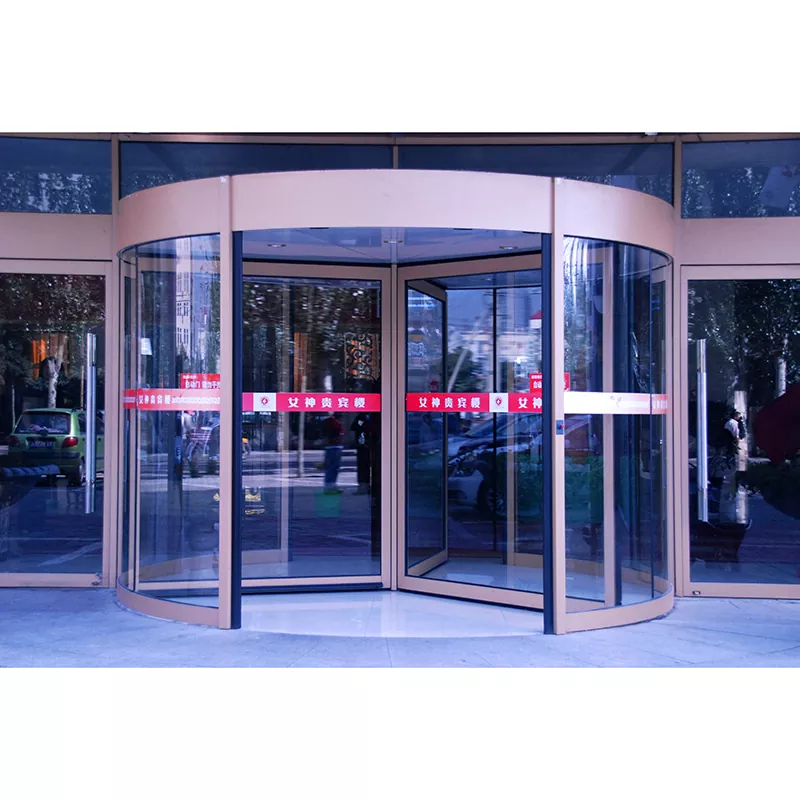
Some of the benefits of using an automatic revolving door include:
While sliding doors are also a popular option for building entrances, automatic revolving doors offer better energy efficiency by preventing drafts from entering the building. Sliding doors often have a brief period where indoor and outdoor air can mix, resulting in a loss of heating or cooling. With revolving doors, there is less air exchange between the indoor and outdoor environments, leading to better temperature control, which in turn can save energy.
The cost of an automatic revolving door will vary depending on the size, material, and the manufacturer. On average, an automatic revolving door could cost anywhere from several thousands to tens of thousands of dollars. The higher price point is often due to the complex engineering required to make a safe, reliable door that can handle heavy traffic flow.
Yes, automatic revolving doors are safe. They are designed and engineered to meet building safety codes and must be installed by certified professionals to ensure proper functionality.
Revolving doors require maintenance to decrease the wear and tear of the parts. Regular maintenance should be done every 4-6 months to keep the doors operating smoothly. Maintenance typically includes lubrication of door parts, inspection of sensors and other electrical components, and cleaning of glass and frames. Consult with the manufacturer's instructions or call a professional technician to ensure doors are properly maintained.
In summary, automatic revolving doors offer a variety of benefits that make them an excellent choice for any building entrance. They are energy-efficient, improve traffic flow, reduce noise, and improve security. They are a safe and reliable option that requires regular maintenance to continue to operate smoothly and efficiently.
Ningbo VEZE Automatic Door Co., Ltd. is a manufacturer of various types of automatic doors, including automatic sliding doors, automatic swing doors, and automatic revolving doors. With over 15 years of experience, VEZE has been dedicated to producing high-quality automatic doors at competitive prices. Visit their website at https://www.vezedoor.com or contact them at info@vezedoors.com.
1. Smith, J. (2018). The benefits of automatic doors. Facility Executive Magazine, 35(7), 44-48.
2. Johnson, A. (2015). Automatic revolving doors: an energy-saving solution. Construction Week Online, 160(3), 28-32.
3. Patel, K. (2016). The safety of revolving doors. Occupational Safety and Health, 72(4), 68-74.
4. Wang, H. (2019). A review of automatic door technologies. International Journal of Facility Management, 4(2), 56-62.
5. Kim, S. (2017). The cost and benefits of automatic doors. Engineering Today, 49(8), 82-86.
6. Harris, M. (2015). Maintenance of automatic doors. Facility Maintenance Journal, 28(3), 17-22.
7. Lee, S. (2018). Sensors in automatic doors. Sensors Journal, 25(6), 21-26.
8. Nakamura, Y. (2016). The history of revolving doors. Architecture and Interior Design, 42(3), 11-16.
9. Zheng, L. (2019). Automatic doors and building sustainability. Journal of Sustainable Architecture, 12(2), 32-37.
10. Wu, T. (2017). A comparative study of automatic door technologies in public buildings. Journal of Building Performance, 18(5), 21-29.
-
